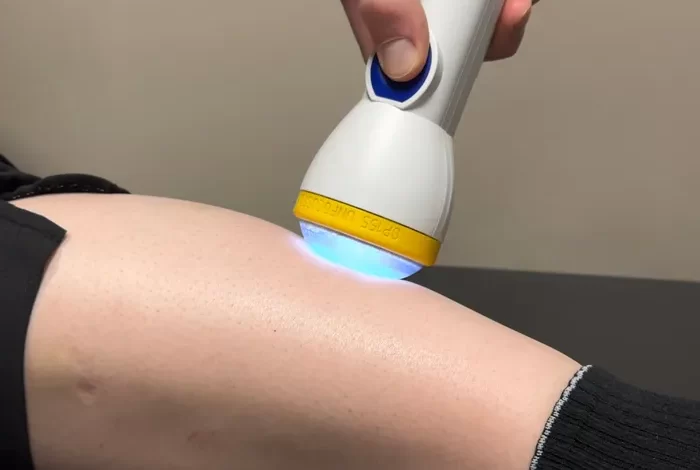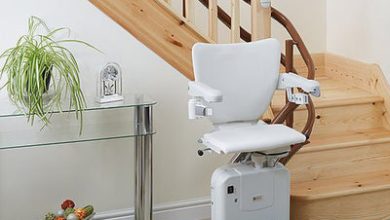Revolutionizing Healing: How SoftWave Tissue Regeneration Therapy Works

When it comes to healing, people often search for ways to reduce pain and recover faster without surgery or medications. One of the latest advancements in non-invasive therapy is SoftWave Tissue Regeneration. This breakthrough treatment uses sound waves to stimulate the body’s natural healing process, promoting tissue repair and offering pain relief. For residents in Glendale, AZ, SoftWave therapy provides a promising option for addressing chronic pain, injuries, and even certain long-term conditions. In this article, we’ll explore how SoftWave Tissue Regeneration therapy works, its benefits, and why it’s gaining attention as a game-changing treatment.
What is SoftWave Tissue Regeneration?
SoftWave Tissue Regeneration therapy uses a unique technology that sends sound waves through the body to target damaged tissues. These sound waves are different from those used in ultrasounds or other types of imaging. Instead, they’re specially designed to reach deep into muscles, tendons, and other tissues, helping to trigger the body’s natural healing response. By stimulating the body in this way, SoftWave therapy promotes faster recovery, reduces inflammation, and provides long-lasting pain relief.
For many people in Glendale, AZ, SoftWave Tissue Regeneration is an attractive option because it’s non-invasive, meaning it doesn’t require surgery or medications. This therapy is suitable for a wide range of issues, including chronic pain, sports injuries, arthritis, and more.
How Does SoftWave Therapy Work?
The key to SoftWave Tissue Regeneration therapy lies in the power of sound waves. Here’s how the therapy works:
- Targeted Sound Waves: During a SoftWave session, a device sends sound waves directly to the area of concern. The sound waves reach deep into the tissue, stimulating cells to begin the healing process.
- Activating Healing Cells: These sound waves activate special cells known as stem cells. Stem cells play a vital role in healing because they help repair damaged tissues. By encouraging the activity of stem cells, SoftWave therapy helps to “wake up” the body’s healing response in areas that might not have healed on their own.
- Reducing Inflammation: Inflammation is a major cause of pain and discomfort. The sound waves produced during SoftWave therapy work to reduce inflammation by improving blood flow and decreasing pressure on sensitive areas.
- Improving Circulation: SoftWave therapy increases blood flow to the targeted area, which helps bring oxygen and nutrients to the tissue. This boost in circulation not only aids in the healing process but also helps prevent future issues by promoting overall tissue health.
Each SoftWave session is quick and doesn’t require any downtime, making it a convenient option for those with busy schedules. Patients often feel relief after their first session, and while some conditions may require multiple sessions, many people notice improvements in pain and mobility right away.
Benefits of SoftWave Tissue Regeneration Therapy
SoftWave Tissue Regeneration offers numerous benefits, making it an appealing choice for individuals dealing with pain or injuries. Here are some of the primary advantages of this therapy:
- Non-Invasive: Unlike surgical options, SoftWave therapy doesn’t require any incisions or injections. This makes it a great choice for people who prefer natural treatment options without the risks or recovery time associated with surgery.
- Drug-Free Pain Relief: Many people seek alternatives to pain medications due to side effects or dependency concerns. SoftWave therapy provides pain relief without the need for prescription drugs, making it a safe, drug-free option for managing pain.
- Fast Recovery Times: Since SoftWave therapy is non-invasive, there’s no downtime needed. Patients can get back to their daily routines immediately after treatment, which is especially helpful for those with busy lifestyles.
- Versatile Applications: SoftWave therapy is effective for a range of conditions, including joint pain, back and neck pain, tendonitis, sports injuries, and arthritis. This versatility allows it to benefit people of all ages and activity levels.
- Long-Lasting Effects: SoftWave therapy doesn’t just provide temporary relief—it addresses the underlying cause of pain by promoting healing at the cellular level. As a result, many patients experience long-lasting benefits, even after their sessions are completed.
Conditions SoftWave Therapy Can Help
SoftWave Tissue Regeneration therapy is suitable for various conditions that impact mobility, comfort, and quality of life. Here are some of the most common issues it can help:
- Sports Injuries: From sprains to muscle strains, SoftWave therapy can help athletes and active individuals recover from sports-related injuries and get back to their activities sooner.
- Arthritis Pain: Arthritis can lead to chronic pain and stiffness. By reducing inflammation and encouraging tissue repair, SoftWave therapy offers relief for arthritis sufferers.
- Back and Neck Pain: Chronic back or neck pain is a common complaint for many people. SoftWave therapy helps relieve pressure in these areas, reducing pain and improving mobility.
- Tendonitis: Tendonitis, which is inflammation of the tendons, can cause pain and restrict movement. SoftWave therapy works to ease inflammation, allowing tendons to heal more effectively.
- Plantar Fasciitis: Plantar fasciitis is a painful foot condition that affects many people. SoftWave therapy can reduce inflammation in the feet, providing relief and helping people regain their ability to walk comfortably.
With its ability to address such a wide variety of conditions, SoftWave therapy is quickly becoming a go-to treatment for people looking to manage pain and improve their overall quality of life.
Who Can Benefit from SoftWave Therapy?
SoftWave Tissue Regeneration therapy is suitable for most people, regardless of age or activity level. It’s a good option for anyone dealing with pain, inflammation, or injuries that haven’t responded well to other treatments. SoftWave therapy is also ideal for those who want to avoid medications or surgery, as it provides a natural approach to healing.
If you’re unsure if SoftWave therapy is right for you, a consultation with a healthcare provider can help determine if this treatment could benefit your specific condition. In Glendale, AZ, more people are turning to SoftWave therapy as a safe and effective way to manage their pain and improve their quality of life.
Begin Your Healing Journey with Trinity Chiropractic
SoftWave Tissue Regeneration therapy offers an exciting approach to pain relief and tissue repair without the need for surgery or drugs. For those in Glendale, AZ, looking for a natural, non-invasive way to support healing and reduce discomfort, SoftWave therapy could be the answer. If you’re ready to explore how this revolutionary therapy can benefit you, visit Trinity Chiropractic to learn more and take the first step toward lasting relief.





